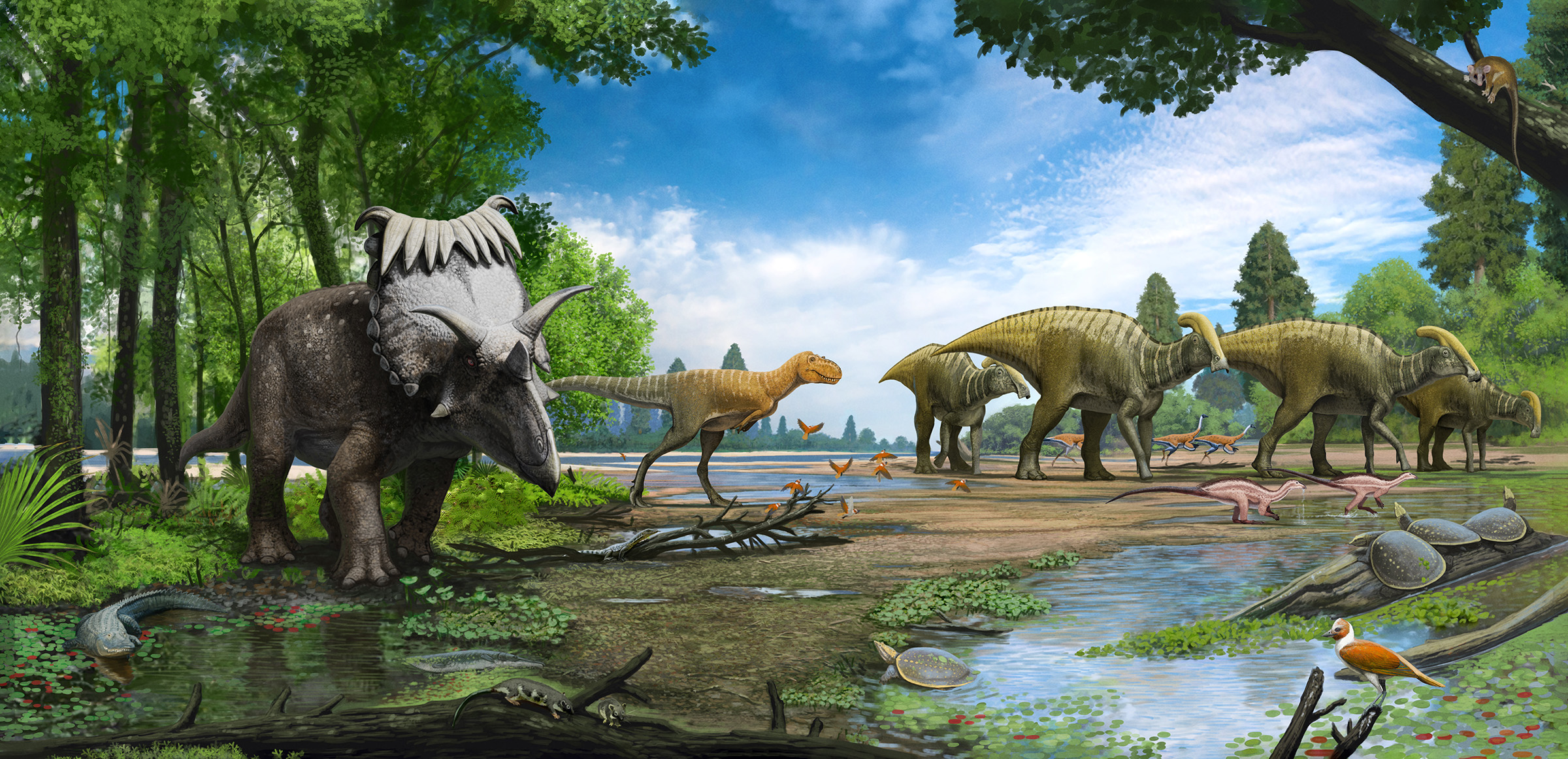During much of the Late Cretaceous, Laramidia, the western landmass of North America isolated by the Western Interior Seaway, hosted some of the most diverse dinosaur ecosystems ever uncovered. In addition to spectacular dinosaurs, these fossil assemblages include first appearances of many modern groups of plants and animals, including alligators, birds, and flowering plants, making the sequence and timing of their radiations consequential for understanding the origins of modern ecosystems.
Joe Sertich, Curator of Dinosaurs at the
Denver Museum of Nature & Science, will present on recent work by the Denver Museum of Nature & Science and other collaborating institutions that have uncovered troves of new fossils from central and southern locations on Laramidia, notably on the Kaiparowits Plateau of southern Utah in Grand Staircase-Escalante National Monument. A decade of fieldwork in the Kaiparowits and Wahweap formations has revealed new fossiliferous intervals hosting dozens of new dinosaurs, many of them challenging previous hypotheses of dinosaur distribution!
You can read more about the Laramidia project here.
